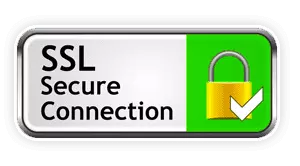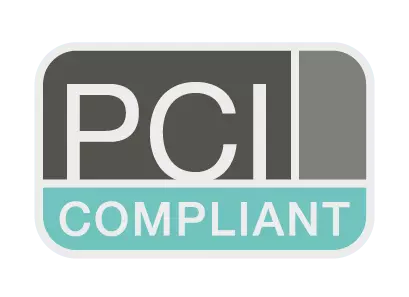John Deere 304H loader Operator's Manual
Catalog:
Model:
Price: US$ 29.00
John Deere 304H loader Operator's Manual
omt184550 - 304h loader Operator's Manual.pdf
Complete Operator's Manual for John Deere 304H loader, with all the shop information to maintain and operate.
Total Pages: 522 pages
File Format: PDF (Internal Links, Bookmarked, Table of Contents, Searchable, Printable, high quality)
Language: English
omt184550 - 304h loader
Table of Contents
Foreword
Technical Information Feedback Form
Section 05: Safety
304H Loader
Recognize Safety Information
Understand Signal Words
Follow Safety Instructions
Avoid Injury from Rollover Accidents -------------------------------- Wear Your Seat Belt -------------------------------- Do Not Attempt to Jump Clear of Tipping Machine-Serious or Fatal Crushing Injuries Will Result -------------------------------- Machine Will Tip Over Faster Than You Can Jump Free
Avoid Injury from Backover Accidents ------------------------------------ Before Moving Machine, Be Sure All Persons Are Clear of Area ------------------------------------ Always Be Alert for Bystanders Moving into the Work Area. Use Horn or Other Signal to Warn Bystanders Before Moving Machine ------------------------------------ When Using a Signal Person, Keep Person in View at all Times. Be Sure Signal Person is Clear Before Backing Up
Avoid Injury from Rollaway Accidents ------------------------------------ To Prevent Rollaway, Always Make Sure Machine Is Properly Secured Before Leaving Operator's Seat ------------------------------------ Death or Serious Injury May Result if You Attempt to Mount or Stop a Moving Machine ------------------------------------
Inspect Machine
Use Handholds and Steps
Prevent Machine Runaway
Use Seat Belt Properly
Maintain Seat Belt
Travel Safely
Drive Machine Safely
Operate Machine with Caution
Operating on Slopes
Carrying Loads
Avoid Power Lines
Beware of Exhaust Fumes
Keep Riders off Machine
Handle Fuel Safely-Avoid Fires
Prepare for Emergencies
Clean Trash from Machine
Protect Against Flying Debris
Wear Protective Clothing
Protect Against Noise
Handle Chemical Products Safely
Use Safety Lights and Devices
Keep ROPS Installed Properly
Warn Others of Service Work
Practice Safe Maintenance
Support Machine Properly
Remove Paint Before Welding or Heating
Avoid Heating Near Pressurized Fluid Lines
Avoid High-Pressure Fluids
Clean the Machine Regularly
Service Cooling System Safely
Store Attachments Safely
Dispose of Waste Properly
Section 06: Safety Signs
Safety Signs
Section 10: Operator's Station
Monitor Gauges, Indicators and Dash Switches
Side Console Switches
Warning Alarm
Battery Voltage Indicator
Low Engine Oil Pressure Indicator
Forward Direction Indicator
Reverse Direction Indicator
Hydraulic Oil Temperature Indicator
Park Brake Indicator
Clock, Hour Meter, and Speedometer
Monitor Messages
High Speed Indicator
Low Speed Indicator
Pilot Disable Indicator
Engine Air Filter Restriction Indicator
Engine Coolant Temperature Indicator
Seat Belt Indicator
High Beams ON Indicator
Turn Signal Indicator
Engine Preheat
Fuel Gauge
Engine Coolant Temperature Gauge
Boom and Bucket Control Lever
Quick Disconnect and Auxiliary Hydraulic Lever
FNR Lever and Speed Selector
Neutral Lock Latch
Turn Signal Lever
Pedals
Horn Button
Operating Front Windshield Wiper and Washer
Operating Rear Windshield Wiper and Washer
Adjusting Steering Column Tilt
Setting the Clock
Opening and Securing Side Door
Secondary Exit
Drive Lights
Work Lights-If Equipped
Heater Operation
Air Conditioner-If Equipped
Air Conditioner-If Equipped
Air Flow Control
Adjusting Seat
Cab Removal and Installation
4th Function Auxiliary Hydraulics-If Equipped
Section 20: Pre-Start Inspection
Inspect Machine Daily Before Starting
Section 25: Operating the Engine
Check Instruments Before Starting
Cold Weather Start-Up
Starting the Engine
Using Booster Batteries-12 Volt System
Check Instruments After Starting
Warm-Up
Cold Weather Warm-Up
Stopping the Engine
Section 30: Driving the Machine
Driving on Public Roads
General Driving Precautions
Neutral Lock Latch
Shifting the Machine
Slowing and Stopping the Machine
Park Brake Switch
Parking the Machine
Lock All Compartments
Section 35: Operating the Machine
Boom and Bucket Control Lever
Operating Quick Disconnect
Pilot Enable/Boom Down Switch
Brake/Inching Pedal
Boom Height Kickout Adjustment
Return-to-Dig Adjustment
Operating 4th Function Auxiliary Hydraulics-If Equipped
General Operating Tips
Turning the Machine
Excavating Banks or Stockpiles
Using the Loader Bucket
Backdragging
Backfilling
Truck Loading
Fork Attachment
Material Handler Arm Attachment
Section 40: Transporting
Transporting Precautions
Loading Machine on a Trailer
Towing Procedure
Lifting the Machine
Section 45: Fuels and Lubricants
Diesel Fuel
Lubricity of Diesel Fuel
Low Sulfur Diesel Fuel Conditioner
Diesel Fuel Storage
Fuel Tank
Diesel Engine Oil
Differentials and Final Drives Oil
Hydraulic System Oil
Service Brake Oil
Grease
Alternative and Synthetic Lubricants
Lubricant Storage
Mixing of Lubricants
Section 50: Periodic Maintenance
Service Your Machine at Specified Intervals
Drain Hose Storage
Check the Hour Meter Regularly
Use Correct Fuels and Lubricants
Prepare Machine for Maintenance
Locking Machine Frame
Boom Lock
Opening Hood
Check Windshield Washer Fluid Level
Maintenance and Repair Record Keeping System
OILSCAN Plus, OILSCAN Plus is a registered trademark of Deere & Company CoolScan PlusCoolScan Plus is a registered trademark of Deere & Company and 3-Way Coolant Test Kit
Service Intervals
Section 55: Maintenance-As Required
Inspect and Replace V-Belt(s)
Drain Fuel Filter Sediment
Clean Air Cleaner Elements
Inspect Element
Clean Dusty Primary Element
Lubricate Cab Door Hinges
Check Tire Pressure
Tire Pressures
Tighten Wheel Lug Nuts
Section 60: Maintenance-Every 10 Hours or Daily
Check Coolant Level
Check Engine Oil Level
Clean Air Cleaner Dust Unloader Valve
Check Hydraulic Oil Level
Section 65: Maintenance-Every 50 Hours
Lubricate Loader Linkage and Cylinder Pivots
Lubricate Gear Case to Front Axle Shaft
Lubricate Front and Rear Steering Cylinder Pivots
Lubricate Rear Steering Axle Pivots
Lubricate Oscillating Rear Axle
Lubricate Frame Hinge Pivot
Section 75: Maintenance-Every 250 Hours
Clean Cab Air Filter
Change Engine Oil and Replace Filter
Check Brake Oil Level
Section 80: Maintenance-Every 500 Hours
Check Coolant Conditioner
Check and Clean Hydraulic Oil Cooler and Radiator
Replace Primary Fuel Filter
Replace Final Fuel Filter
Bleeding the Fuel System
Check Air Intake Hose
Replace Hydraulic Oil Return Suction Filter
Check Battery Electrolyte Level and Terminals
Check Rear Differential and Gear Case Oil Level
Check Front Differential Oil Level
Check Front and Rear Final Drives Oil Level
Check Brake/Inching Pedal Linkage Adjustment
Section 85: Maintenance-Every 1000 Hours
Check Park Brake and Service Brake Pads
Replace Cab Air Filter
Speed Control Linkage Adjustment
Change Rear Differential and Gear Case Oil
Check and Adjust Engine Valve Lash
Clean Engine Crankcase Vent Tube
Replace Air Cleaner Elements
Replace Air Cleaner Dust Unloader Valve
Replace Hydraulic Tank Breather
Change Rear Final Drive Oil
Change Front Differential and Front Final Drives Oil
Section 86: Maintenance-Every 2000 Hours
Clean Hydraulic Oil Fill Strainer
Change Hydraulic System Oil
Section 88: Maintenance-Every 3000 Hours
Draining the Cooling System
Diesel Engine Coolant
Filling the Cooling System
Replace Seat Belt
Section 90: Maintenance
Test the Coolant Freeze-Protection Level
Precautions for Alternator and Regulator
Service Batteries Carefully
Checking Electrolyte Specific Gravity
Using Battery Charger
Replacing Batteries
Removing Batteries
Replacing Fuses
Fuse (Blade-Type) Color Codes
Engine Speeds
Checking Neutral Start System
Service Pilot Accumulator
Adding Attachments/Accessories to Rollover Protective Structure (ROPS)
Welding on Machine
Park Brake Adjustment
Service Brake Adjustment
Replace Marker Light and Drive Light Bulbs
Do Not Service Control Valves, Cylinders, Pumps or Motors
Keep ROPS Installed Properly
Brake/Inching Pedal Linkage Adjustment
Check Receiver/Dryer Moisture Indicator-If Equipped
Check Receiver-Dryer Moisture Indicator-If Equipped
Hardware Torque Specifications
Metric Bolt and Cap Screw Torque Values
Additional Metric Cap Screw Torque Values
Unified Inch Bolt and Cap Screw Torque Values
Check Oil Lines and Fittings
Service Recommendations For Metric 24° O-Ring Seal DIN 20078
Service Recommendations For Non-Restricted Banjo (Adjustable) Fittings
Service Recommendations For O-Ring Boss Fittings With Shoulder
Service Recommendations for Metric Series Four Bolt Flange Fitting
Service Recommendations For Inch Series Four Bolt Flange Fittings
Section 95: Operational Checkout
Operational Checkout
Section 100: Troubleshooting
Using Troubleshooting Charts
Monitor Service Codes
Engine
Hydrostatic System
Differential and Axle
Service Brake
Driveline
Park Brake
Hydraulic System
Steering
Hydraulic Fan Motor and Pump
Heater System
Air Conditioning-If Equipped
Section 105: Storage
Prepare Machine for Storage
Monthly Storage Procedure
Section 110: Machine Numbers
Record Product Identification Number (PIN)
Record Engine Serial Number
Record Gear Case Serial Number
Record Hydrostatic Pump Serial Number
Record Front Axle Serial Number
Record Rear Axle Serial Number
Record Hydrostatic Motor Serial Number
Section 115: Specifications
304H Loader Specifications
Drain and Refill Capacities
Section 120: Crime Prevention Tips
Help Prevent Crime
Record Identification Numbers
Keep Proof of Ownership
Park Indoors Out of Sight
When Parking Outdoors
Reduce Vandalism
Report Thefts Immediately
Section CLIS: Checklists
Service Intervals







